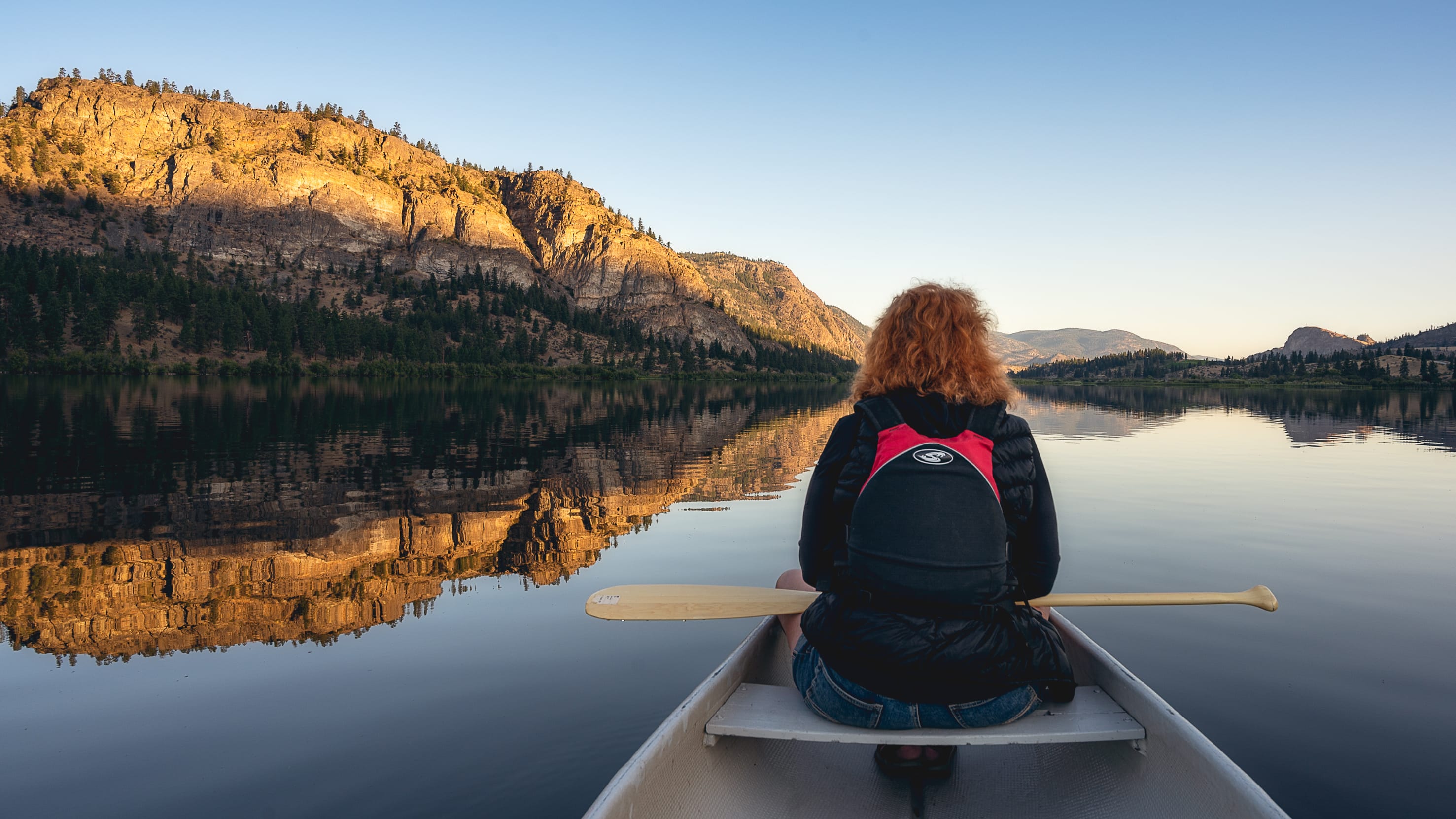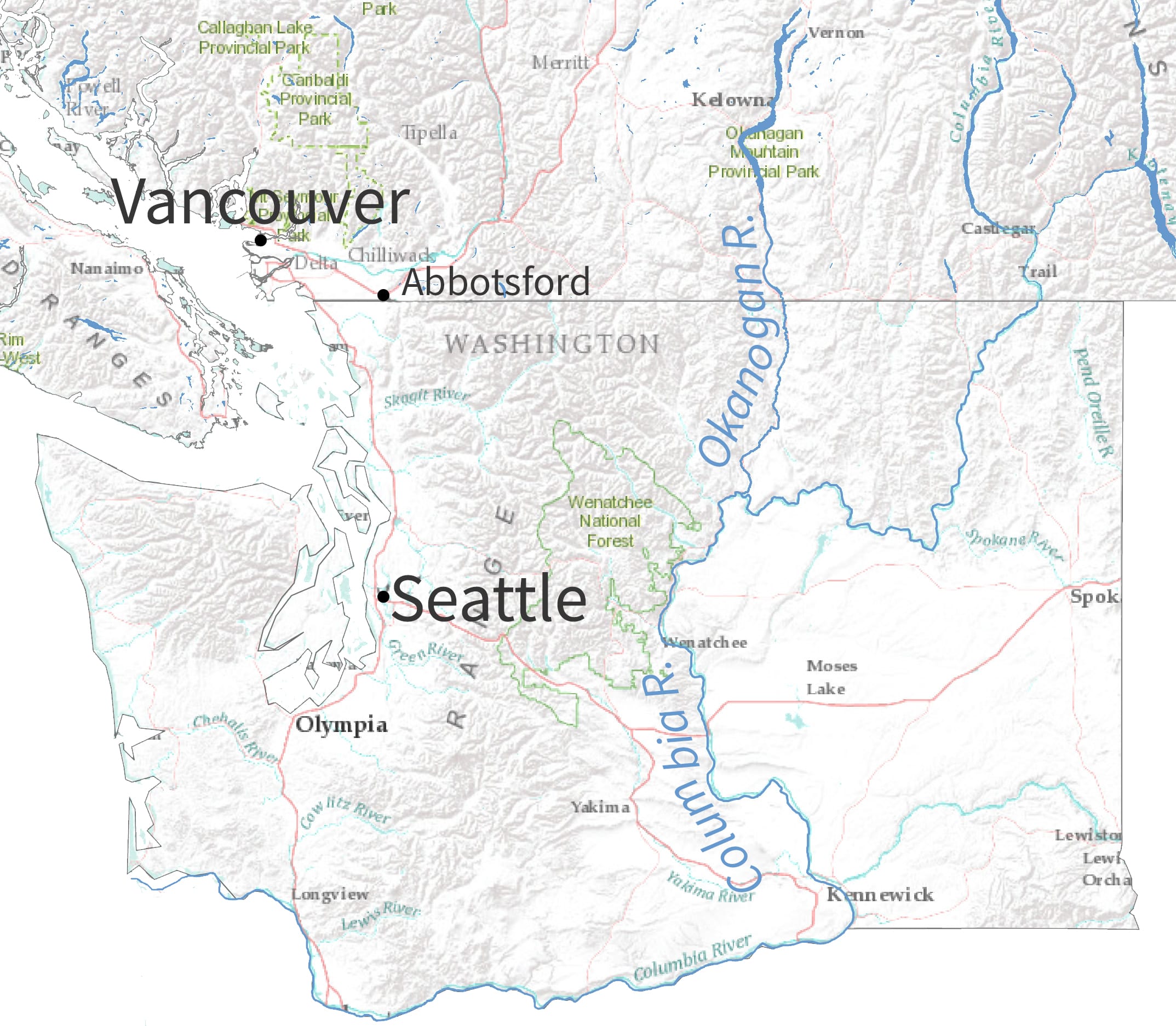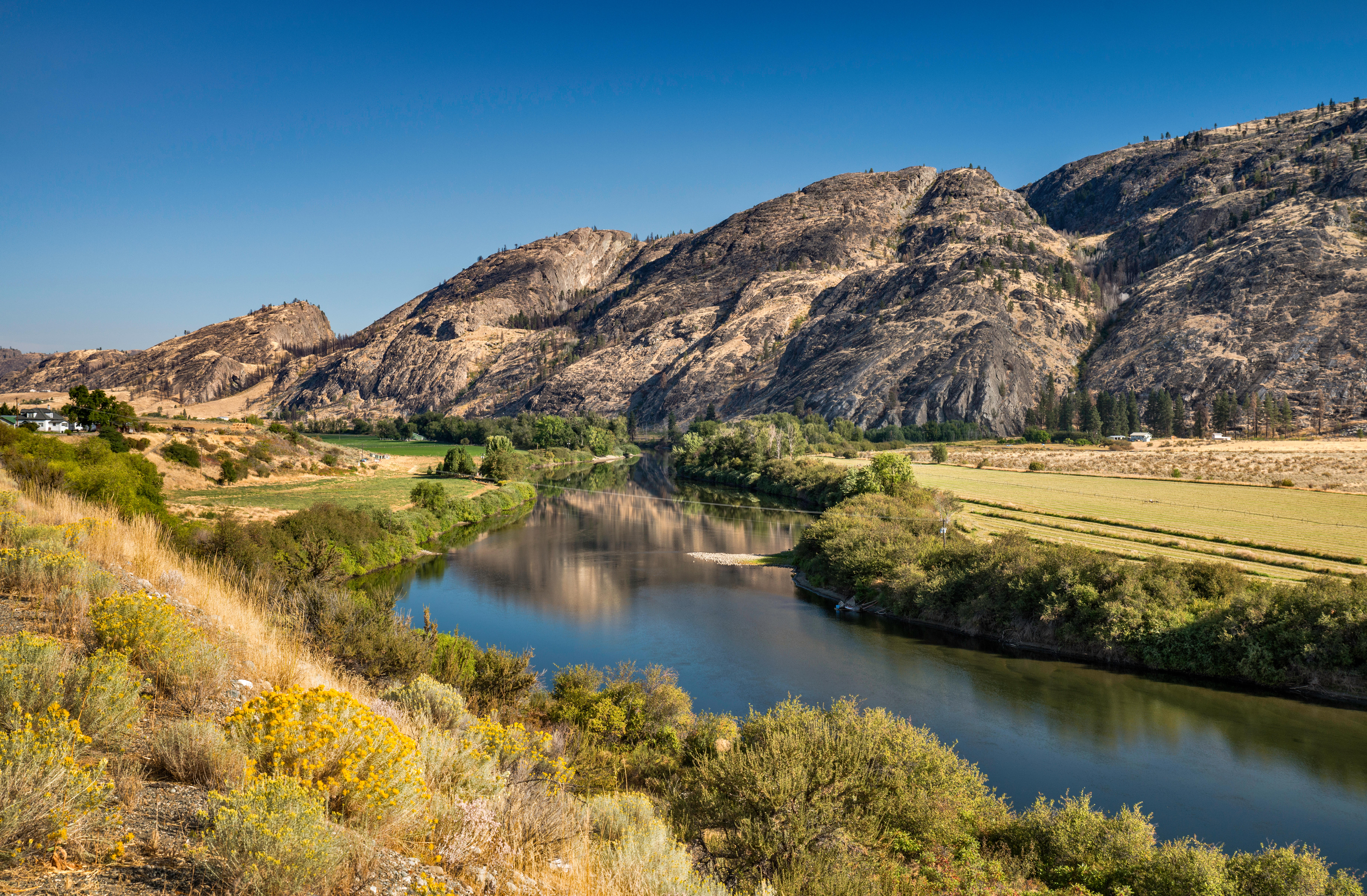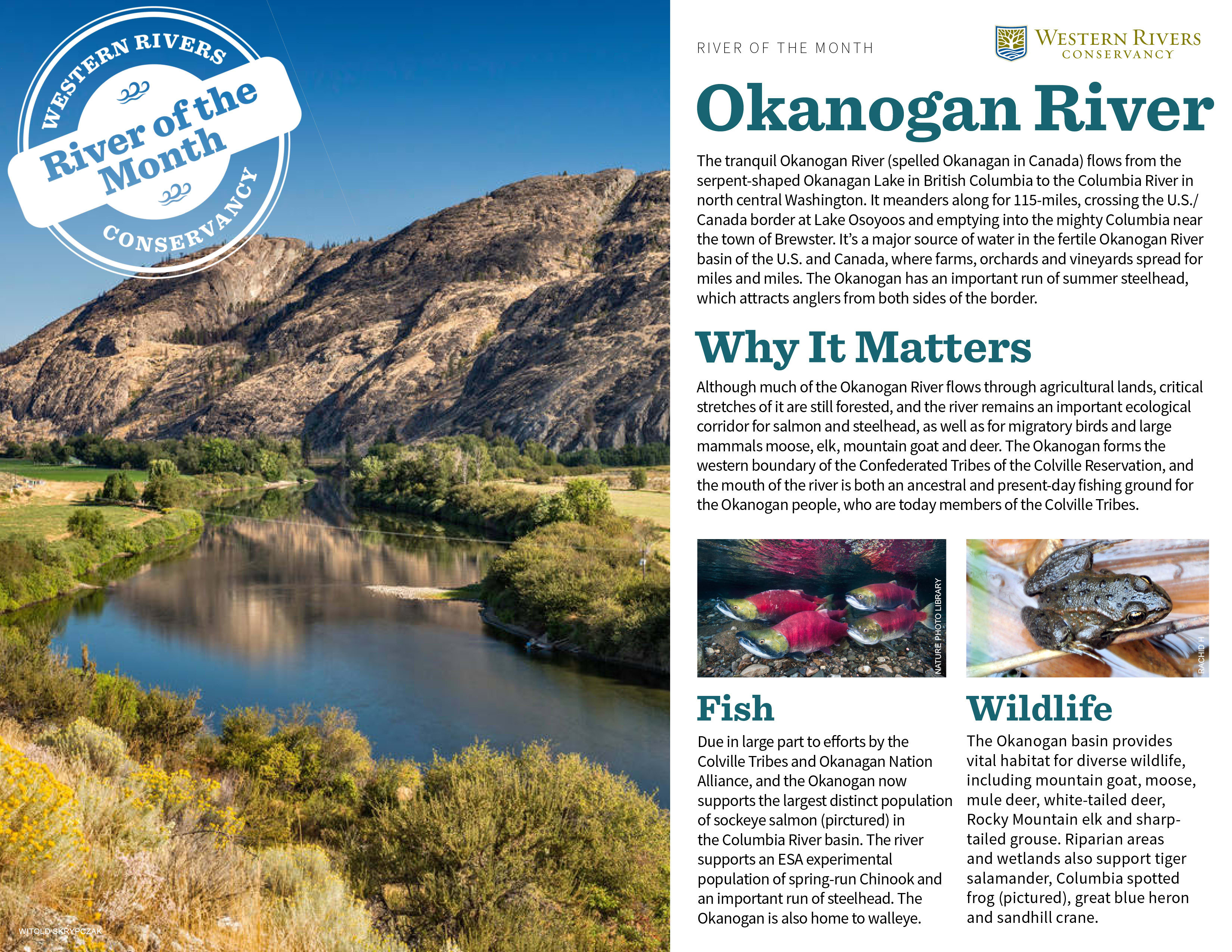
Fish
Due in large part to efforts by the Colville Tribes and Okanagan Nation Alliance, the Okanogan now supports the largest distinct population of sockeye salmon (pictured) in the Columbia River basin. The river supports important populations of spring-run Chinook and summer steelhead. The Okanogan is also home to walleye.

Wildlife
The Okanogan basin provides vital habitat for diverse wildlife, including mountain goat, moose, mule deer, white-tailed deer, Rocky Mountain elk and sharp-tailed grouse. Riparian areas and wetlands also support tiger salamander, Columbia spotted frog (pictured), great blue heron and sandhill crane. Photo by Rachid S. Homsany.
-
Fish
For folks in central and eastern Washington, the Okanogan is a popular fishing destination, occasionally for steelhead (depending on whether the river is open or not), often for Chinook and sockeye, and almost always for non-native smallmouth bass. In late summer, the confluence of the Okanogan and Columbia can be one of the most productive salmon fishing areas of the Columbia River. Check regulations.
-
Sightsee
For stunning views of the Okanogan River and its surrounding fertile valleys and rugged hillsides, take a winding drive along the Okanogan Trails Scenic Byway. The 80-mile byway spans from the U.S./Canada border to Pateros, Washington. It follows the Okanogan River and bordering the Confederated Tribes of the Colville Reservation, with historical markers along the way that tell the story of the area’s native peoples and emigrants.
-
Hike
For a strenuous outing try the Whistler Canyon Trail, a 24-mile round-trip trek that starts at the Okanogan River, traverses rock faces where hikers often spot mountain goats, and ends with amazing views of the Okanagan Valley. For an easier hike, visit the Similkameen Trail, which winds for four miles round-trip along the Similkameen River, a tributary to the Okanogan. This hidden jewel of a trail is dotted with interpretive signs and viewpoints throughout.
The WRC Story
In 2020, WRC embarked on an effort in partnership with the Colville Tribes to recover Antione Creek, a critical steelhead spawning stream that flows into the Okanogan River. Our goal is to re-water the stream—which is drained dry by water withdraws nearly every year—by returning four square miles of ancestral lands to the tribes. This will allow the tribes to increase water flows in Antione Creek by up to 95 percent during the critical spawning season. In December, WRC successfully acquired the 2,524-acre Antione Valley Ranch, which was once part of the original reservation and spans more than two miles of Antoine Creek. With funding from the Washington Department of Ecology, we transferred half of the land to the Colville Tribes and partnered with Trout Unlimited to permanently dedicate the water in-stream. We are now raising funds to transfer the second half of the ranch to the tribes. The project also protects prime habitat for wildlife, including sharp-tailed grouse, and will allow the Colville Tribes to conduct critically needed stream restoration. Photo by Paul Skelhorne.


Best Time of Year
- Hiking
- Year-round
- Salmon fishing
- Jul-Sep
- Okanogan River
- Jun-Sep
Go Deeper
-
A River Film
(Okanagan WaterWise)
Learn More -
Confederated Tribes of the Colville Reservation: A Brief History
(Confederated Tribes of the Colville Reservation)
Learn More


